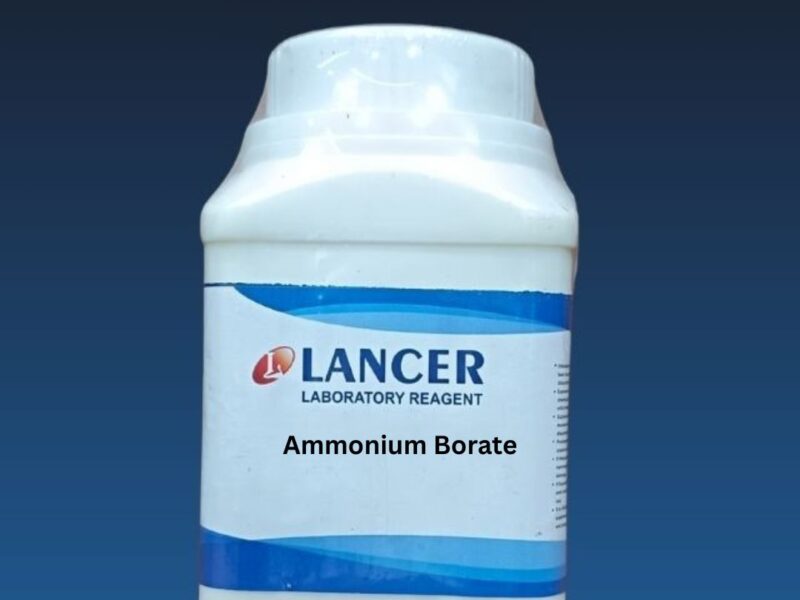

1.8M (+)-Diisopinocampheylchloroborane in hexanes, AcroSeal®-packaged for moisture-sensitive asymmetric reductions. High enantioselectivity reagent.
₹46,870.00 Original price was: ₹46,870.00.₹32,809.00Current price is: ₹32,809.00.
Product Name – (+)-Diisopinocampheylchloroborane, 1.8M solution in hexanes, AcroSeal®
Quantity/Pack Size – 100ML
Form – Solution
Grade – Reagent
Application – Asymmetric synthesis, chiral reductions
(+)-Diisopinocampheylchloroborane (DIP-Chloride) is a highly selective chiral reducing agent supplied as a 1.8M solution in hexanes, specifically packaged in AcroSeal® bottles to prevent moisture contamination. This reagent is derived from α-pinene and is widely recognized for its ability to perform enantioselective reductions of ketones, producing secondary alcohols with high optical purity. The hexanes solvent system ensures optimal solubility and reactivity while maintaining the reagent’s stability during storage and handling. The AcroSeal® packaging features a resealable septum cap that minimizes exposure to air and moisture, preserving the reagent’s activity over extended periods. This solution is particularly valuable in organic synthesis where stereochemical control is critical, offering consistent performance in laboratory-scale reactions. The 1.8M concentration provides an ideal balance between reactivity and ease of handling, making it suitable for precise volumetric additions in synthetic protocols. The reagent’s chiral induction properties stem from its rigid bicyclic structure, which creates a sterically demanding environment during the reduction process, leading to predictable stereochemical outcomes.
The solution remains stable for at least 12 months when stored unopened in its original AcroSeal® packaging at recommended temperatures. Once opened, use within 6 months for optimal performance.
The 1.8M solution is specifically formulated in hexanes for stability. While the solid reagent can be dissolved in other solvents, the pre-made solution should not be diluted or transferred to different solvent systems.
Always work under inert atmosphere using standard Schlenk techniques. The AcroSeal® bottle should be purged with nitrogen before and after each use to prevent moisture contamination.
The septum cap allows for needle access without exposing the entire contents to air, while the bottle’s design minimizes headspace, reducing oxidation and hydrolysis risks during storage.
Other chiral borane reagents like (-)-DIP-Chloride or CBS catalysts can be considered, though each offers different selectivity profiles and may require different reaction conditions for optimal results.
Ammonium Borate, high purity grade, ideal for lab research and education. Essential for various lab applications.
Ammonium Hydrogen Orthophosphate (Dibasic) – High purity, suitable for laboratory use. Essential for various chemical applications.
Alpha Naphthol, high purity, ideal for various lab applications. Suitable for students, researchers, and educators.
Albumin Fixative Mayer-Lancer, high-grade for lab applications. Ideal for fixing tissues.
4-Aminoantipyrine, lab grade, essential for analytical chemistry.

₹46,870.00 Original price was: ₹46,870.00.₹32,809.00Current price is: ₹32,809.00.
1.8M (+)-Diisopinocampheylchloroborane in hexanes, AcroSeal®-packaged for moisture-sensitive asymmetric reductions. High enantioselectivity reagent.
Product Name – (+)-Diisopinocampheylchloroborane, 1.8M solution in hexanes, AcroSeal®
Quantity/Pack Size – 100ML
Form – Solution
Grade – Reagent
Application – Asymmetric synthesis, chiral reductions
(+)-Diisopinocampheylchloroborane (DIP-Chloride) is a highly selective chiral reducing agent supplied as a 1.8M solution in hexanes, specifically packaged in AcroSeal® bottles to prevent moisture contamination. This reagent is derived from α-pinene and is widely recognized for its ability to perform enantioselective reductions of ketones, producing secondary alcohols with high optical purity. The hexanes solvent system ensures optimal solubility and reactivity while maintaining the reagent’s stability during storage and handling. The AcroSeal® packaging features a resealable septum cap that minimizes exposure to air and moisture, preserving the reagent’s activity over extended periods. This solution is particularly valuable in organic synthesis where stereochemical control is critical, offering consistent performance in laboratory-scale reactions. The 1.8M concentration provides an ideal balance between reactivity and ease of handling, making it suitable for precise volumetric additions in synthetic protocols. The reagent’s chiral induction properties stem from its rigid bicyclic structure, which creates a sterically demanding environment during the reduction process, leading to predictable stereochemical outcomes.
The solution remains stable for at least 12 months when stored unopened in its original AcroSeal® packaging at recommended temperatures. Once opened, use within 6 months for optimal performance.
The 1.8M solution is specifically formulated in hexanes for stability. While the solid reagent can be dissolved in other solvents, the pre-made solution should not be diluted or transferred to different solvent systems.
Always work under inert atmosphere using standard Schlenk techniques. The AcroSeal® bottle should be purged with nitrogen before and after each use to prevent moisture contamination.
The septum cap allows for needle access without exposing the entire contents to air, while the bottle’s design minimizes headspace, reducing oxidation and hydrolysis risks during storage.
Other chiral borane reagents like (-)-DIP-Chloride or CBS catalysts can be considered, though each offers different selectivity profiles and may require different reaction conditions for optimal results.
High-purity Aminobenzoic Acid for lab applications. Ideal for research and educational purposes.
High-purity Aluminium Fluoride suitable for various lab applications.
Acetocarmine Stain (0.5%) is a high-quality, reliable lab supply ideal for various applications. Suitable for students, researchers, and educators.
High-grade Alkaline Copper Tartarate Solution for precise lab applications.
Aluminium Metal Fine Powder, Laboratory Grade, Ideal for various lab applications.
Agra | Firozabad | Hathras | Mathura | Vrindavan | Aligarh | Lucknow | Ambala | Mainpuri | Shikohabad | Alwar | Bhind | Bharatpur | Morena | Gwalior | Orai | Kanpur | Jhansi | Hardoi | Shahjahanpur | Lakhimpur | Pilibhit | Haldwani | Basti | Gorakhpur | Deoria | Azamgarh | Prayagraj | Varanasi | Sultanpur | Moradabad and more….

Not a member? Create an account
Already got an account? Sign in here
By Clicking “Download Now”, you are confirming that you have read and agree to eqipped.com ‘s Terms of Use and Privacy Policy.
By Clicking “Join Now”, you are confirming that you have read and agree to eqipped.com ‘s Terms of Use and Privacy Policy.